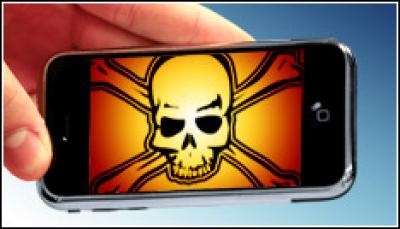WHO Labels Mobile Phones As ‘Possibly Carcinogenic’

The World Health Organisation has warned that mobile phones could be linked to brain cancer
The humble mobile phone continues to be the subject of ongoing health debates, after the World Health Organisation (WHO) said the radiation emitted by handsets was “possibly carcinogenic”, although it admitted it did not find evidence of a clear link between the two.
This is according to the International Agency for Research on Cancer, which is part of the WHO.
“The WHO/International Agency for Research on Cancer (IARC) has classified radiofrequency electromagnetic fields as possibly carcinogenic to humans (Group 2B), based on an increased risk for glioma, a malignant type of brain cancer, associated with wireless phone use,” the group said.
Advice U-Turn
The change in stance is noteworthy because it contradicts previous WHO advice, that mobile phone usage was safe.
“Considering the very low exposure levels and research results collected to date, there is no convincing scientific evidence that the weak RF signals from base stations and wireless networks cause adverse health effects,” the WHO previously said.
 This means that mobile phones are now placed in the same risk category as coffee, the pesticide DDT, and lead, and will mean that national governments will face pressure to update their advice to the general public.
This means that mobile phones are now placed in the same risk category as coffee, the pesticide DDT, and lead, and will mean that national governments will face pressure to update their advice to the general public.
For example, the UK’s Department of Health, says exposure to electromagnetic fields poses little or no risk to human health, although it recently updated its advice saying that sending SMS messages or using hands-free kits can reduce exposure to radiation, as it keeps the handset away from the head.
Eight Day Review
The IARC conclusions come after it asked a working group of 31 scientists to look at the available evidence over the past eight days.
“The evidence was reviewed critically, and overall evaluated as being limited among users of wireless telephones for glioma and acoustic neuroma, and inadequate to draw conclusions for other types of cancers,” the IARC said. “The evidence from the occupational and environmental exposures mentioned above was similarly judged inadequate.”
“The evidence, while still accumulating, is strong enough to support a conclusion and the 2B classification,” said Dr Jonathan Samet (University of Southern California,) who is overall Chairman of the Working Group
“The conclusion means that there could be some risk, and therefore we need to keep a close watch for a link between cell phones and cancer risk,” he said.
“Given the potential consequences for public health of this classification and findings,” said IARC Director Christopher Wild, “it is important that additional research be conducted into the long‐term, heavy use of mobile phones. Pending the availability of such information, it is important to take pragmatic measures to reduce exposure such as hands‐free devices or texting.”
It is also recommended that children only use mobiles when strictly necessary, as they are at greater risk of absorbing radiation.
Ongoing Debate
This latest development comes after an influential European committee earlier this month called for a ban on mobile phones and Wi-Fi networks in schools.
That call was denounced by the industry body the GSM Association (GSMA), which said the European report was an “unbalanced political assessment, not a scientific report.”
However the WHO advice will be music to the ears of campaigners who have long been convinced of the dangers of low level radiation. Last year a local law was passed in California that stated that all mobile phones sold in San Francisco had to clearly display the levels of radiation they emit.
A study from Imperial College London in June 2010 found no cancer risk for children born near mobile phone masts. Another report by the UK’s Mobile Telecommunications and Health Research Programme in 2007 also found no association between mobile phones and adverse health effects.
However it now conducting a more detailed study into the long-term effects of mobile phones.